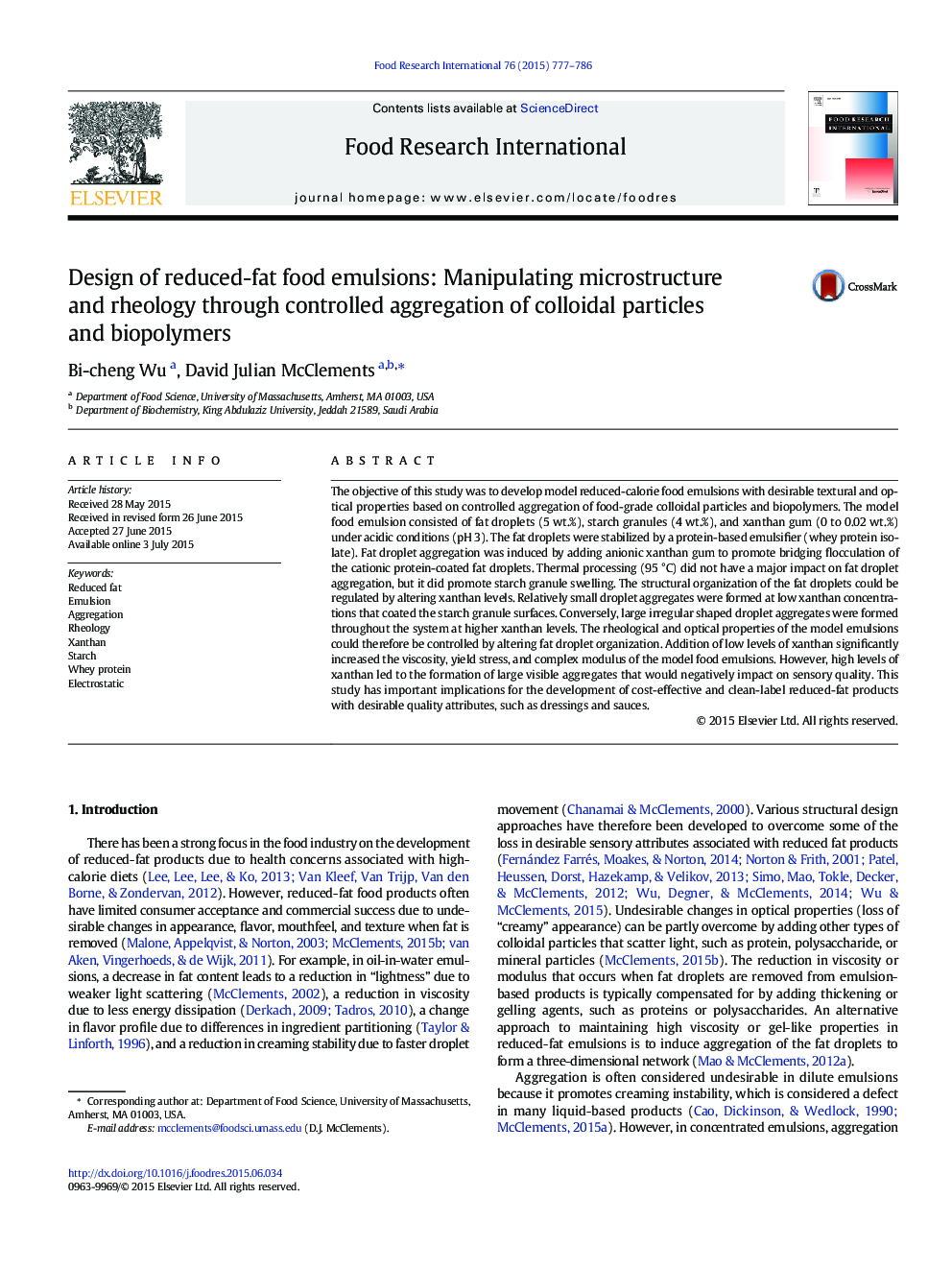| Article ID | Journal | Published Year | Pages | File Type |
|---|---|---|---|---|
| 6395253 | Food Research International | 2015 | 10 Pages |
â¢Model food emulsions contained fat droplets and starch granules at pH 3.â¢These model emulsions represent some dressings, sauces, dips, and desserts.â¢Xanthan addition promoted fat droplet aggregation through electrostatic bridging.â¢Fat droplet aggregation led to a large increase in viscosity and modulus.
The objective of this study was to develop model reduced-calorie food emulsions with desirable textural and optical properties based on controlled aggregation of food-grade colloidal particles and biopolymers. The model food emulsion consisted of fat droplets (5 wt.%), starch granules (4 wt.%), and xanthan gum (0 to 0.02 wt.%) under acidic conditions (pH 3). The fat droplets were stabilized by a protein-based emulsifier (whey protein isolate). Fat droplet aggregation was induced by adding anionic xanthan gum to promote bridging flocculation of the cationic protein-coated fat droplets. Thermal processing (95 °C) did not have a major impact on fat droplet aggregation, but it did promote starch granule swelling. The structural organization of the fat droplets could be regulated by altering xanthan levels. Relatively small droplet aggregates were formed at low xanthan concentrations that coated the starch granule surfaces. Conversely, large irregular shaped droplet aggregates were formed throughout the system at higher xanthan levels. The rheological and optical properties of the model emulsions could therefore be controlled by altering fat droplet organization. Addition of low levels of xanthan significantly increased the viscosity, yield stress, and complex modulus of the model food emulsions. However, high levels of xanthan led to the formation of large visible aggregates that would negatively impact on sensory quality. This study has important implications for the development of cost-effective and clean-label reduced-fat products with desirable quality attributes, such as dressings and sauces.
